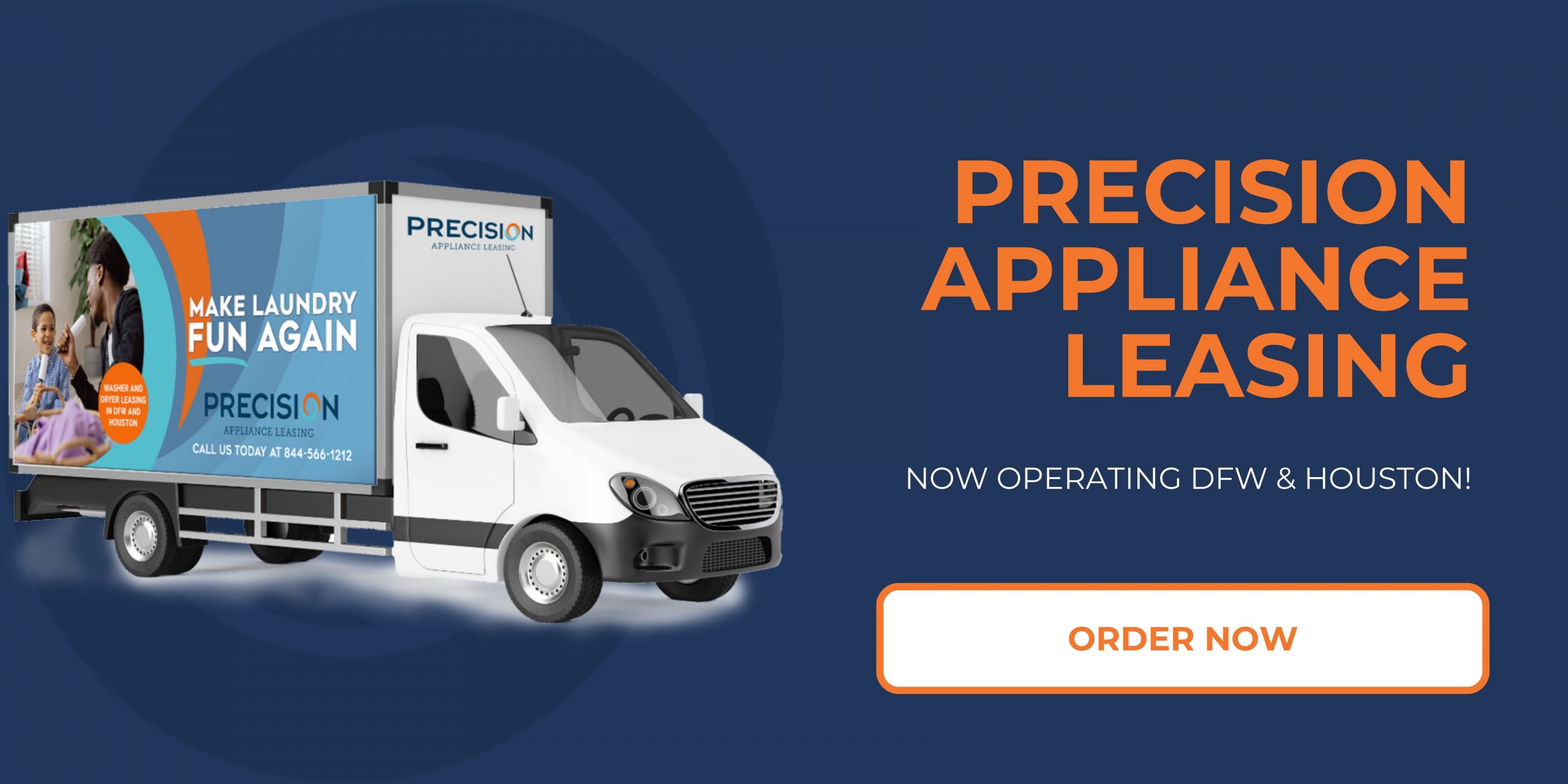How to Maintain Your Leased Washer and Dryer for Peak Performance Without Breaking the Bank
When it comes to managing household chores, having a reliable washer and dryer can make all the difference. For those who have opted to lease these essential appliances, maintaining them in peak condition is crucial—not only for ensuring optimal performance but also for avoiding costly repairs or penalties that might arise from neglect. A leased washer and dryer may not belong directly to you, but treating them with care and attention can enhance their longevity and efficiency, ultimately saving you money in the long run.
Understanding the nuances of appliance maintenance doesn’t require you to be a seasoned handyman or a financial expert. With a few simple and cost-effective practices, anyone can safeguard their appliances against common issues that arise from daily use. From the importance of routine cleaning to the benefits of making minor adjustments, these proactive steps can help avert malfunctions that lead to expensive repair bills or frustration down the line. Moreover, maintaining your washer and dryer properly also contributes to better energy efficiency, leading to lower utility costs—a win-win for your wallet.
This guide will walk you through essential maintenance tips and techniques tailored specifically for leased washers and dryers, ensuring that you can attend to your laundry needs without incurring additional costs. By implementing easy and budget-friendly strategies, you can keep your appliances in prime condition, extend their lifespan, and enjoy a seamless laundry experience—no matter how many times you need to cycle through those loads.
Routine Cleaning and Maintenance Tips
Maintaining your leased washer and dryer is essential not only for ensuring their longevity and performance but also for avoiding potential costs associated with repairs or early replacements. Routine cleaning and maintenance play a pivotal role in keeping these appliances in prime condition. By following a few straightforward practices, you can help guarantee peak performance without incurring significant expenses.
Firstly, it’s important to regularly clean the lint trap in the dryer. A clogged lint trap can lead to reduced efficiency and even become a fire hazard. After each use, take a moment to remove lint and debris from the trap. Additionally, it’s advisable to perform a thorough cleaning of the dryer vent at least once a year. Accumulated lint in the vent can restrict airflow, causing the dryer to work harder and longer, which wastes energy and may lead to overheating.
In the case of the washer, inspect the door seal and drum for any residue or buildup. Regularly wipe down the rubber door gasket with a damp cloth to remove any mildew and detergent residue. A monthly deep clean of the washer is also beneficial; this can be achieved by running an empty load with hot water and white vinegar to eliminate odors and prevent mold growth. Lastly, make sure to periodically check for leaks or any unusual sounds during operation, as they can indicate underlying issues that may need attention.
Implementing these routine cleaning and maintenance tips can not only extend the lifespan of your washer and dryer but will also ensure they operate efficiently. A little bit of effort goes a long way, saving you from costly repairs and ensuring that your laundry appliances serve you well throughout the duration of your lease.
Proper Usage Guidelines to Prevent Damage
Maintaining a leased washer and dryer requires more than routine cleaning; it hinges significantly on following proper usage guidelines to prevent damage. Proper usage encompasses various practices that ensure the appliances function efficiently and remain in good condition throughout the leasing period. One critical guideline is to load the washer correctly. Overloading can strain the machine, leading to potential breakage or inefficient washing. Conversely, underloading can lead to an imbalance in the spin cycle, which may cause undue wear on the unit. It’s essential to refer to the manufacturer’s guidelines regarding load capacity and to distribute items evenly within the drum.
Another important aspect is to use the recommended types of detergents and fabric softeners. Many modern washers are designed to work with high-efficiency (HE) detergents, which produce fewer suds and are specifically formulated for high-efficiency machines. Using non-HE detergents can lead to excess suds that may cause issues, such as overflowing or poor cleaning performance. Additionally, using the proper settings for different fabrics can help preserve the quality of clothing while reducing wear on the machine. For example, using a gentle cycle for delicate fabrics minimizes agitation and helps prevent stretching or damage.
Regularly inspecting the hoses and connections is another preventable measure that can lead to potential issues down the road. Hoses should be checked for kinks, leaks, or bulges that could indicate wear and tear. Ensuring that the dryer’s vent is clear and properly connected is also crucial. Clogged vents can lead to overheating and dryer inefficiency, posing a fire hazard and increasing energy costs. When using the dryer, it’s advisable to avoid drying items like rubber-backed rugs or shoes, which can damage the drum and vent system.
Finally, be mindful of using the correct settings on both machines. For instance, using the sanitizing cycle or the high-heat setting can be beneficial for specific items but can also lead to increased wear on both the clothing and the dryer over time. By adhering to these proper usage guidelines, you can help prevent damage to your leased washer and dryer while ensuring they operate efficiently, ultimately enhancing their performance, longevity, and reliability—all without incurring extra costs.
Cost-Effective Solutions for Minor Repairs
When it comes to maintaining a leased washer and dryer, understanding cost-effective solutions for minor repairs can save you money and extend the life of your appliances. First and foremost, familiarizing yourself with the common issues that can arise with laundry machines can empower you to address small problems before they escalate into costly repairs. For instance, if you notice that your washer is not spinning properly, it might be due to an unbalanced load or a clogged filter. By regularly checking and cleaning the filter, you can often resolve this issue without needing professional assistance.
DIY repairs can also be a viable option for minor issues, provided you feel comfortable handling them. Many problems, such as replacing a broken door latch or fixing a drainage issue, can often be resolved with simple tools that most households already have on hand. You can find numerous step-by-step guides and video tutorials online that can guide you through the repair process, which can be a rewarding way to learn and engage with your appliances while keeping costs down.
However, utilizing cost-effective repair solutions isn’t just about fixing things on your own. It’s also important to maintain an ongoing relationship with the leasing provider. Many leasing companies include basic maintenance and repairs as part of their service. If you encounter a minor issue that you cannot resolve, it is wise to contact your leasing provider early on; they might cover the cost of certain repairs under the terms of your lease. This not only ensures that you don’t incur unexpected expenses but also prevents potential damages from worsening.
Regularly checking your appliances and knowing what to do in the event of minor malfunctions can prevent many headaches in the long run. Implementing preventive measures, such as cleaning the drum, checking hoses for leaks, and ensuring that all settings are functioning correctly, can significantly reduce the likelihood of needing significant repairs. In essence, by combining DIY approaches with the services provided by your leasing provider, you can keep your washer and dryer running smoothly and efficiently without undue cost.
Energy Efficiency Practices
Maintaining energy efficiency in your leased washer and dryer is not only beneficial for the environment, but it can also lead to significant savings on your utility bills. Adopting energy-efficient practices in their usage can optimize their performance while extending their lifespan. One of the most effective ways to improve energy efficiency is by ensuring that you use the appliances only when they are fully loaded. Both washers and dryers perform best when they are at full capacity, as this maximizes the use of water and energy for each cycle. Avoid running partial loads, as it wastes resources and can lead to a less efficient washing and drying process.
Another important aspect of energy efficiency is selecting the appropriate settings for your laundry needs. Most modern washers and dryers come equipped with various cycles designed for different types of fabrics and load sizes. Choosing the right cycle not only ensures optimal cleaning and drying but also helps to conserve energy. For example, using cold water for washing can save energy, as most of the energy consumed by washing machines goes to heating water. Similarly, using an air-dry or eco-dry setting on your dryer, when feasible, can reduce energy consumption and lessen wear on your clothes.
Additionally, regular maintenance checks can enhance energy efficiency. For instance, cleaning the lint filter in your dryer after each load helps maintain airflow, ensuring that your dryer operates efficiently. Clogged filters can not only make the dryer work harder—which consumes more energy—but also increase the risk of fire hazards. Checking and cleaning the washer’s filter and hoses can prevent clogs and leaks, contributing to better performance as well.
You can also reduce energy costs by being mindful of the time you operate your washer and dryer. If your utility company offers lower rates during off-peak hours, consider running your appliances during these times. This practice can lead to reduced energy expenses and contribute to a more sustainable usage pattern. In sum, by following these energy efficiency practices, you can maintain your leased washer and dryer’s performance, prolong their lifespan, and achieve significant cost savings—all without straining your budget.
When to Contact Your Leasing Provider for Assistance
Understanding when to contact your leasing provider for assistance with your washer and dryer is crucial for maintaining these appliances in optimal condition and avoiding costly issues. While routine maintenance and proper usage can often resolve minor problems, some situations require professional intervention. If you’re experiencing unusual noises, persistent leaks, or error messages that you cannot address on your own, it’s essential to reach out to your leasing provider. These signs often indicate underlying issues that could lead to more significant problems if not addressed promptly.
Additionally, if you’re unsure how to perform repairs or if you’ve attempted minor fixes without success, contacting your leasing provider is a smart decision. They have the expertise to diagnose and fix issues efficiently, potentially saving you from further expenses down the road. Moreover, many leasing agreements come with repair and maintenance clauses that benefit the tenant, meaning that assistance might be provided at no extra cost to you. This can include not just mechanical repairs, but also troubleshooting advice that could clarify the problems you’re encountering.
Another key moment to consult your leasing provider is when it comes to scheduled maintenance or their specific requirements. Some leasing companies have standards that dictate when appliances should be serviced or checked by professionals. Adhering to these recommendations is important for warranty purposes and prevents any potential disputes regarding appliance performance. If you follow their guidelines and keep an open line of communication, you can enjoy your washer and dryer with a sense of security, knowing that expert help is only a phone call away when problems arise.
Finally, staying informed about your rights and responsibilities as a tenant will empower you to make the best use of the services provided by your leasing company. Being proactive in communication can lead to a better living experience overall, ensuring your laundry needs are met without compromising your financial situation.


